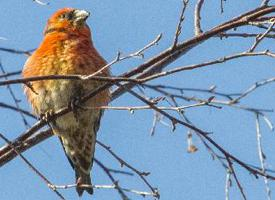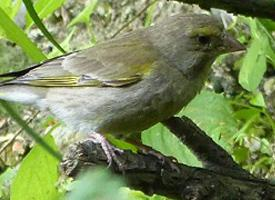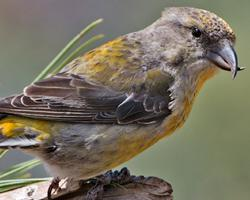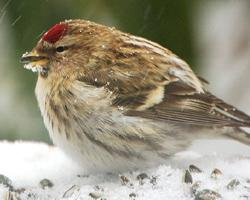
Popis zvířete
The Parrot Crossbill (Loxia pytyopsittacus) is a distinctive and fascinating bird species belonging to the finch family, specifically within the genus Loxia, which is renowned for its unique beak structure. This bird species is predominantly found across the northern and eastern parts of Europe, extending into Siberia, and it is adapted to life in coniferous forests, particularly favoring areas densely populated with pine trees.Physically, the Parrot Crossbill is a robust bird, slightly larger and stockier than other crossbills, measuring approximately 16 to 18 centimeters in length. One of its most striking features is its distinctive bill, which, as its name suggests, resembles that of a parrot. The bill is thick and powerful, with the mandibles crossing at the tips. This unique adaptation allows the Parrot Crossbill to efficiently extract seeds from pine cones, which constitute the bulk of its diet. The bird’s strong jaw muscles further aid in prying open the cones, making it a specialized feeder within its habitat.
The plumage of the Parrot Crossbill exhibits sexual dimorphism, meaning males and females are differently colored. Males typically boast a vibrant reddish-orange coloration that covers much of their bodies, with darker wings and tail providing a striking contrast. Females, on the other hand, are generally more subdued in color, displaying shades of yellowish-green or olive, which serves as excellent camouflage against the foliage. Both sexes, however, share similar wing and tail coloration, which includes dark feathers with lighter edgings.
Behaviorally, Parrot Crossbills are gregarious birds, often found in small flocks, although larger congregations can form, especially in areas where food sources are abundant. They exhibit a strong pair bond during the breeding season, which typically spans from late winter into spring. Their nests are constructed high in the coniferous trees, made from twigs and lined with finer materials such as moss and feathers, where the female lays 3 to 5 eggs.
Vocally, the Parrot Crossbill is less melodious than some of its finch relatives but still produces a variety of calls and songs. Its call is a distinctive "chip-chip" sound, and its song, while not highly complex, is a series of trills and chips that can be heard throughout the year, particularly from males.
Conservation-wise, the Parrot Crossbill does not currently face any major threats and is classified as Least Concern by the IUCN. However, like many forest-dwelling species, it could be susceptible to habitat loss and degradation, particularly from logging and the conversion of forests to agricultural or urban areas. Climate change also poses a potential long-term threat by affecting the distribution and abundance of the coniferous forests they depend on.
In summary, the Parrot Crossbill is a unique and specialized bird species, with its remarkable beak adaptation, vibrant plumage, and specialized feeding habits making it a fascinating subject of study for ornithologists and bird enthusiasts alike. Its presence highlights the intricate balance within coniferous forest ecosystems and the importance of preserving these habitats for the future.
Podobná zvířata
Nové fotografie zvířat
Top 10 zvířat
- Chinese water dragon (Physignathus cocincinus)
- Galápagos tortoise (Geochelone nigra complex)
- Dolphin gull (Leucophaeus scoresbii)
- Japanese macaque (Macaca fuscata)
- Colombian red howler (Alouatta seniculus)
- Sea urchins (Echinoidea)
- Diana monkey (Cercopithecus diana)
- Moustached guenon (Cercopithecus cephus)
- Common reed warbler (Acrocephalus scirpaceus)
- Common house mosquito (Culex pipiens)


